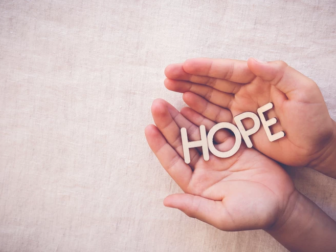The need for self-care and self-love became a rallying cry in the past decade. It seemed that we, as an entire society, suddenly woke up to the reality of how we were treating ourselves and interacting with the world. We weren’t just tired—we were burned out. We weren’t just stressed—we had undiagnosed anxiety, depression, and a whole host of other mental health struggles. Now more than ever, we, both collectively as a society and as individuals, recognize the need for creating healthy emotional and mental boundaries in both our personal and professional lives.
However, despite not only a recognition, but a laser-like focus and removal of stigma on and around these issues, what do we have to show for it? We have self-care seminars and workshops. We have better understanding in the workforce of the need for “mental health days”. We see the pressure we are putting on young people, especially in their teens and early twenties. We know more about the harmful effects of social media. We have entire campaigns, brands, and social media personalities dedicated to helping us love what we see as imperfections in ourselves. Despite all of this, are we, as a society or as individuals, any happier or healthier, any better at caring for and loving ourselves? I’m not sure. And I think COVID has proven that.
Sure, we all know people (or perhaps we have experienced this ourselves) who have made changes in their lives that have helped them. Some have found a proper work/life balance. Some have learned how to set healthy boundaries. Some have stopped numbing themselves with entertainment or alcohol or experiences and found something that made them passionate about life. Some have found joy in a career change, in starting a family, in getting off of social media, or in a hobby. These are things worth celebrating! And opening up conversations about mental health has helped make this possible.
But despite the outpouring of solidarity and support, both online and in our communities, I think many of us have, in some way, struggled with our mental health over the pandemic. And how could we not? The fear, the uncertainty, the separation from (and even more painfully, loss of) friends and family, the isolation, the way day-to-day life changed so suddenly and drastically—each of these things on its own would be enough to destabilize us, and we got them all at once.
And where was our self-love and self-care safety net? For all of our talk, did we have the tools to look after ourselves in the face of all of this? I certainly think we all tried. We shared on social media, speaking about our fears and sufferings, we did our best to be engaged in all of our Zoom meetings, we made the most of tough situations, we found creative ways to use our time and talent with limited resources. These are also things worth celebrating. And I think that our ever-growing recognition over the past decade of the toll that mental and emotional suffering has on us has helped with at least one thing—it is ok to feel overwhelmed right now. And that recognition is absolutely something to be grateful for.
But if all that was needed for self-care and self-love to blossom was an ending of stigma and a greater cultural understanding of mental health—we’re already there. And by that logic, we should have been able to face the pandemic armed with this knowledge, able to apply it and keep living healthy and happy lives. Clearly, this has not been the case. Does that mean we’re all bad at self-love and self-care? No. But I do think that it is an incomplete diagnosis, of both the problem and the solution.
Most mental health advice tells us to change our thinking. What if completing this project a day late is not the end of the world? What if it is important to take time for ourselves? What if we do need to learn about how our brains take in information on social media? And, fundamentally: what lies am I believing about myself? Learning to think like this is not only good and important, but necessary. However, I think the missing piece is how mental and emotional struggles affect us physically. I think we can fall into the trap of treating ourselves like highly complex machines. We can treat mental health advice as a software upload, and treat our failures in following it like some sort of malware. But, "Our Bodies Keep the Score."
We see this in both the positive (for example, improved mental health often leads to improved sleep) and in the negative (for example, nervousness often leads to decreased appetite). But it seems that the most I see about physical health from the self-care industry is taking the time to exercise. And how easy it is for exercise to become just another part of the to-do list! If you don’t particularly enjoy going to the gym, no amount of time spent there is going to help you. And if you’re already experiencing “Zoom Fatigue,” no online exercise program is going to help, either.
For all of our talk on the mental and emotional toll of the pandemic, we need to be aware of the corresponding physical toll. And while getting our heart rates up does have provable physical benefits, and is certainly better than nothing, we must understand this relationship in order to make a real difference in our lives and health.
I speak to this from personal experience. In the last ten years, increases in mental and emotional stress have often accompanied physical injury, and vice versa. The psychological and the physical have intertwined in my life in a way that makes it difficult to identify which came first. At this point, I don’t know if it’s useful to turn it into a chicken-and-egg problem. Another way to look at it is that we, as human beings, are one, integrated whole. When one part of us has a problem, the rest reacts. And whether that problem is in the body and we have a seemingly unrelated psychological reaction, or if the problem is psychological and we have a seemingly unrelated bodily reaction, the result is the same: there is a type of disruption, or a dis-integration, within our very selves.
What, then, is the solution? How do we re-integrate?
I certainly think we are on the right track. Self-love and self-care and recognition of mental health struggles are all part of the solution. But it is not the whole solution. We need to look at our bodies, and see what they are telling us, too. And the solution might not be simply a change in diet or exercise—even though those things might well be necessary, and good!
In my training in the Anat Baniel Method, my teachers often described the method as a way to “come home” to ourselves. And I think we could all use some help coming home.
When I do ABM lessons myself, I often experience a sense of calm and focus. It is not like meditation, where the focus might be to escape from the physical constraints of the body. It is more like tuning in to myself as a whole. I truly feel more connected to myself—not in a spiritual way, but in a literal way. Muscular contractions that I was not previously consciously aware of let go, and I stand, move, and breathe with greater ease. This physical ease of movement feeds into my mental state, and vice versa; if my thoughts had been racing, they slow down.
The scientific evidence of the connection between the psychological and physical is vast and growing; numerous books (such as the one I linked to earlier), articles, and studies have been done on mental health, trauma, recovery, neuroplasticity, and the like. I am not, in this blog post, trying to make a scientific argument. I am speaking from my personal experience: all the traditional physical rehabilitation practices made little longterm difference for me, but ABM has, and continues to do so. When I explain ABM and its principles to others, the response is often, “that sounds great for anyone who is suffering”. Tell me—are you yourself free from suffering? “Be kind, because everyone is fighting their own battles” is a truism for a reason.
When I decided to take the training, I didn’t know how much I needed to “come home” to myself. And that coming home, I’m realizing, is a lifelong commitment, as we all meet different challenges in the different seasons of our lives. ABM is now as essential to me as solid mental health advice and other healthy lifestyle choices. Because at its core, ABM is a learning modality. And my goal as a practitioner is to help my clients (or, more accurately, my students) to take ABM principles out of my office and into their day-to-day lives, just as I am learning how to do. In a word, to help them re-integrate.
My invitation to anyone curious about ABM is to give it a try—because I think we can all benefit from feeling a little more at home.





